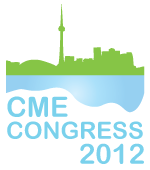Marianna Shershneva (University of Wisconsin School of Medicine and Public Health, Madison, Wisconsin); Heidi Moore (University of Wisconsin School of Medicine and Public Health, Madison, Wisconsin); Ji-Hye Kim (University of Wisconsin School of Medicine and Public Health, Madison, Wisconsin); Cynthia Kear (California Academy of Family Physicians, San Francisco, California); Robin Heyden (Heyden Ty, Boston, Massachusetts)
Synopsis
We studied the effectiveness of an interactive training for clinicians on motivational interviewing (MI) for smoking cessation that was delivered in a three-dimensional, virtual world (Second Life). The study showed significant improvements in MI competencies and self-reported improvements in knowledge, skills and clinical practice. Our findings support use of three-dimensional virtual worlds as learning environments for continuing medical education.
Purpose
Limited research has been done to understand outcomes of educational programs for physicians offered in three-dimensional, immersive virtual worlds, such as Second Life (SL). We studied the effectiveness of training on motivational interviewing (MI) for smoking cessation delivered to 22 primary care clinicians and residents in SL. The training consisted of three two-hour sessions involving didactic presentations, practice with avatar-patients, and chat interactions.
Methods
To facilitate content development and outcome assessment, we developed a program logic model and specified seven desired MI competencies. Data were collected from 13 participants through pre— and three-month post-activity telephone/Skype interviews, objective structured clinical examination with standardized patients, and activity observation. Interactions with patients were assessed by an expert using a validated MI tool and by patients using a tool developed by the program team. For 11 participants who attended two or three sessions, we conducted paired-samples t-tests comparing mean differences between the competency scores pre— and post-event.
Results
Participants reported they learned new knowledge/skills, and the majority reported using newly-learned MI techniques in their practice. Practicing MI with patient-avatars and/or observing others’ practice appeared to be the most helpful training component. Expert assessment showed significant improvement on six of seven competencies (p< .05). Patient assessment showed improvement on seven competencies, but no comparisons reached significance.
Conclusions
An interactive educational activity in SL had positive impact on participants’ competencies and practice as related to MI for smoking cessation. Our findings support the use of three-dimensional virtual worlds as learning environments for continuing medical education.
Funding Sources
This study was funded by an educational grant from Pfizer. The authors have no other relevant financial/commercial relationships to disclose.





